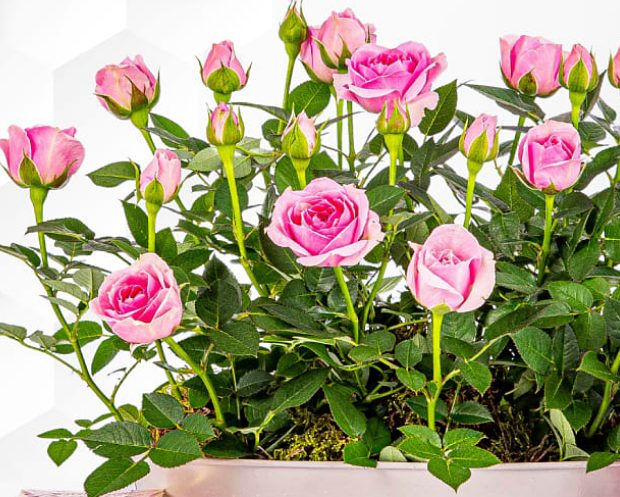
Growing Summer Flowers in Containers: Tips and Tricks
Container gardening offers a versatile and accessible way to cultivate beautiful summer flowers, even if you have limited outdoor space. Whether you’re adorning a balcony, patio, or window sill, growing flowers in containers allows you to enjoy a colorful and vibrant garden throughout the summer months. With the right selection of plants and proper care, you can create stunning floral displays that brighten up any outdoor space. Here’s a guide to planting and maintaining summer flowers in pots and containers.
Choose the Right Containers
When selecting containers for your summer flowers, consider both aesthetics and functionality. Opt for containers with drainage holes to prevent waterlogging, and ensure they are large enough to accommodate the root systems of your chosen plants. You can choose from a variety of materials, including terracotta, ceramic, plastic, or wooden containers, depending on your personal preference and the style of your outdoor space.
Select Suitable Summer Flowers
Choose summer flowers that are well-suited to container gardening and thrive in the warm weather conditions. Some popular options include petunias, geraniums, marigolds, zinnias, begonias, and lobelia. Consider the sunlight exposure and space available in your outdoor area when selecting flowers, and choose varieties that will complement each other in terms of height, color, and texture.
Use Quality Potting Soil
Fill your containers with high-quality potting soil that is well-draining and nutrient-rich. Avoid using garden soil, as it may become compacted and hinder root growth in containers. Look for potting mixes specifically formulated for container gardening, which typically contain a blend of peat moss, perlite, and compost to provide optimal growing conditions for your summer flowers.
Provide Adequate Drainage
Ensure proper drainage in your containers by placing a layer of gravel or small stones at the bottom before adding potting soil. This helps prevent water from pooling at the bottom of the container and ensures sufficient aeration for the roots. Additionally, consider elevating your containers on pot feet or using saucers to allow excess water to drain away freely.
Water Regularly
Watering is crucial for the health and vitality of summer flowers grown in containers, especially during hot and dry weather. Check the moisture level of the soil regularly and water whenever the top inch feels dry to the touch. Avoid overwatering, as it can lead to root rot and other issues. Water the soil directly at the base of the plants, rather than overhead, to prevent fungal diseases and water wastage.
Fertilize Appropriately
Fertilize your container-grown summer flowers regularly to ensure they receive the necessary nutrients for healthy growth and abundant blooms. Choose a balanced, water-soluble fertilizer formulated for flowering plants and follow the manufacturer’s instructions for application. Apply fertilizer every two to four weeks during the growing season, taking care not to over-fertilize, which can lead to nutrient imbalances and damage to the plants.
Deadhead Spent Blooms
Regular deadheading is essential for prolonging the blooming period of your summer flowers and promoting continuous flowering. Remove faded or spent blooms promptly to encourage the plants to produce new buds and flowers. Use clean scissors or pruning shears to snip off the dead flowers, taking care not to damage the healthy foliage or stems.
Provide Adequate Sunlight
Most summer flowers thrive in full sunlight, so ensure your containers receive at least six to eight hours of direct sunlight per day. Position your containers in a sunny spot on your balcony, patio, or windowsill where they can soak up the sun’s rays. If your outdoor space is shaded, choose shade-tolerant flowers such as impatiens or begonias that can thrive in low-light conditions.
Protect from Pests and Diseases
Keep an eye out for common pests and diseases that may affect your container-grown summer flowers, such as aphids, spider mites, and powdery mildew. Monitor your plants regularly for any signs of pest infestation or disease, and take appropriate measures to control them, such as handpicking pests, using insecticidal soap, or applying organic fungicides. Maintaining good air circulation around your containers can also help prevent fungal diseases.
Provide Support as Needed
Some summer flowers may require support to prevent them from flopping over or becoming damaged by wind or rain. Consider using stakes, trellises, or cages to provide support for tall or sprawling plants such as tomatoes, dahlias, or climbing vines. Install supports early in the growing season to avoid disturbing the roots or damaging the plants later on.
Growing summer flowers in containers is a rewarding and enjoyable experience that allows you to unleash your creativity and brighten up your outdoor space. By following these tips and tricks for planting and maintaining container-grown flowers, you can create stunning floral displays that thrive throughout the summer months. Whether you’re a novice gardener or a seasoned green thumb, container gardening offers endless possibilities for cultivating beautiful blooms and enhancing your outdoor living environment. So gather your containers, select your favorite summer flowers, and get ready to enjoy a season of colorful blossoms and blooming beauty!
